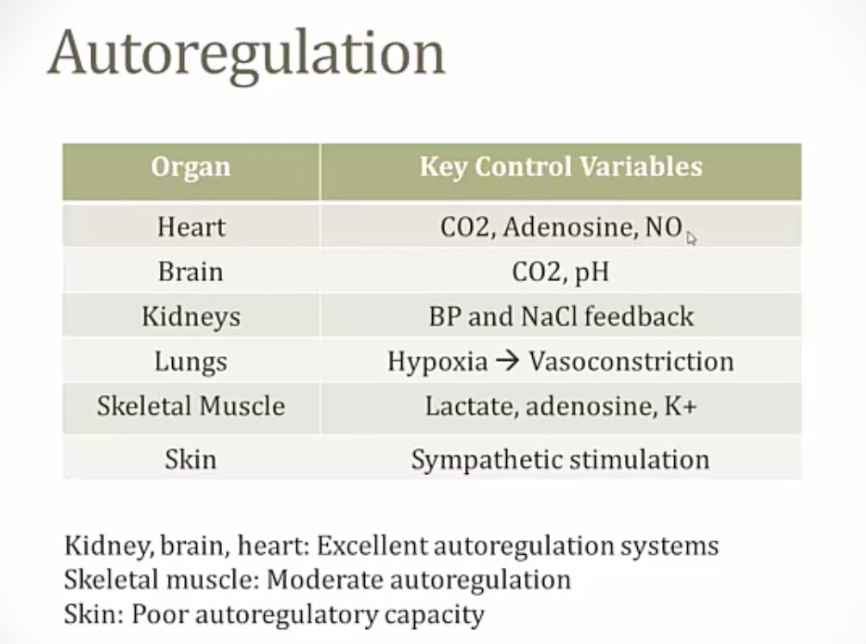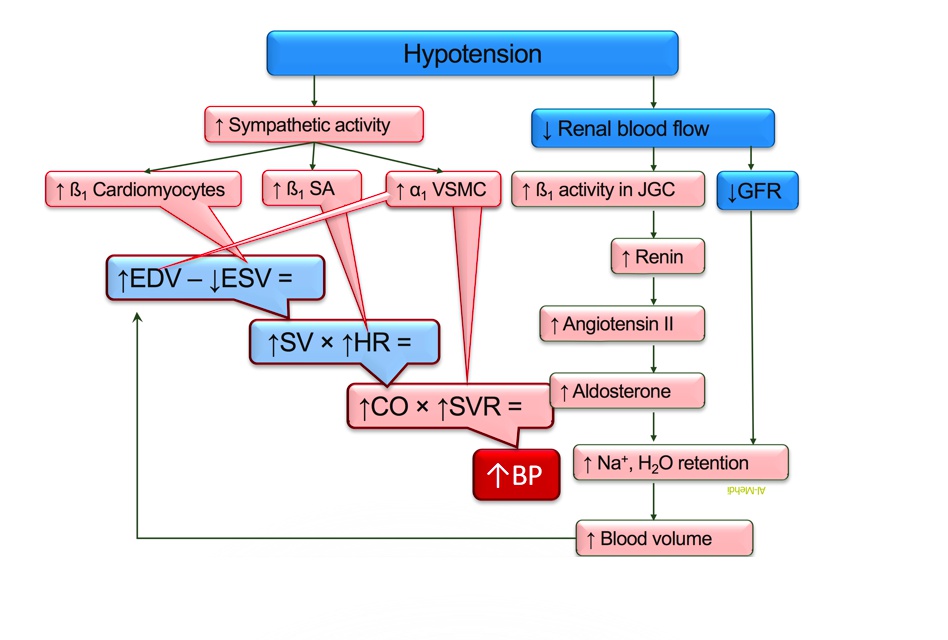02 Heart Physiology
Autoregulation
_A physiological attempt to maintain constant blood flow despite changes in blood/perfusion pressure. Stated another way, autoregulation is the adjustment of blood flow through an organ in accordance with its metabolic needs..
_The brain uses CO2 which induces vasodilation and increased perfusion..

_The autoregulation of blood flow in cardiac tissue is regulated by the following vasodilatory stimuli:
CO2
NO
Adenosine: Adenosine increase in metabolism from ATP/ADP
Hypoxia..

_The myogenic hypothesis and tubuloglomerular feedback are the major mechanisms by which the kidneys autoregulate blood flow..

_The lungs respond to hypoxia by inducing pulmonary vasoconstriction. The lung is the only organ that responds to hypoxia by vasoconstriction. This makes sense because it deflects pulmonary blood flow from hypoxic areas to areas with good ventilation. This is a physiological mechanism to limit V/Q differences. All other organs respond to hypoxia by vasodilation..

_The autoregulation of blood flow in skeletal muscles during exercise is regulated by local metabolites that induce vasodilation. These metabolites include:
Adenosine
Lactate
K+
H+
CO2
The regulation of blood flow in skeletal muscles at rest is primarily regulated by the sympathetic nervous system..

_The sympathetic nervous system is the primary regulator of blood flow in the skin. This mechanism is particularly important for the regulation of body temperature..

sympathetic constricts blood vessels. Getting scared > cold finger tips..
CO
_ determined by TPR _ determined by CO

_CO = SV x HR Using Fick’s principle: CO = (VO2) / (Ca – Cv)
VO2 = oxygen consumption (ml/min) Ca = oxygen content of arterial blood Cv = oxygen content of mixed venous blood
_ MAP = CO x TPR MAP ≈ diastolic pressure + 1/3 pulse pressure
Pulse pressure = systolic pressure – diastolic pressure
_Pulse pressure is directly proportional to stroke volume. A higher stroke volume, such as in aortic regurgitation, will exhibit a high pulse pressure (high systolic and low diastolic measurements).
Last updated
Was this helpful?